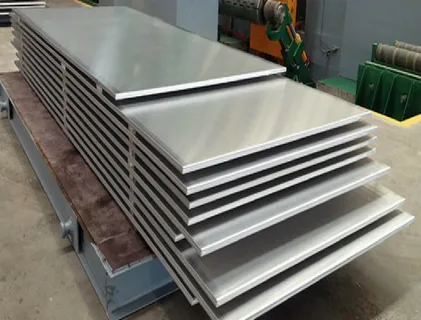Aluminium plates are widely used across various industries due to their strength, lightweight nature, and excellent corrosion resistance. However, to enhance both their aesthetic appeal and functional performance, different surface finishes are applied. In this article, we provide an overview of surface finishes available for aluminium plate, exploring their characteristics, benefits, and applications.
Why Surface Finishes Matter
Surface finishes play a critical role in the performance of aluminium plates. They can:
- Improve corrosion resistance
- Enhance appearance and reflectivity
- Increase wear and abrasion resistance
- Facilitate better bonding or coating adhesion
- Provide texture for specific functional or design needs
Depending on the end-use, choosing the right finish can significantly impact the lifespan and appearance of aluminium components.
Types of Surface Finishes for Aluminium Plates
1. Mill Finish
Mill finish is the most basic form of aluminium plate finish. It refers to the natural finish produced during the rolling process, without any additional treatment. Though cost-effective, it may not be suitable for applications requiring high corrosion resistance or visual appeal.
2. Anodized Finish
Anodizing is one of the most popular surface finishes for aluminium plates. It involves an electrochemical process that thickens the natural oxide layer on the surface. Key benefits include:
- Improved corrosion and wear resistance
- Enhanced adhesion for paints and glues
- Wide range of color options for decorative use
3. Brushed Finish
This finish gives the aluminium plate a distinct, textured appearance created by polishing the surface with abrasive belts. It’s often used in architectural and decorative applications where aesthetics are important.
4. Powder Coating
Powder coating involves applying a dry powder to the surface and curing it under heat to form a protective layer. This method offers:
- Excellent durability
- Custom colors and textures
- Resistance to chipping, scratching, and fading
5. Painted Finish
Painting aluminium plates allows for a variety of colors and finishes, including gloss, matte, and textured. It provides good UV and weather resistance but may not be as durable as powder coating.
Factors to Consider When Choosing a Surface Finish
When exploring an overview of surface finishes available for aluminium plates, it’s important to consider the following:
- Environment: Will the aluminium be exposed to moisture, salt, chemicals, or extreme temperatures?
- Aesthetic Requirements: Does the project require a specific color, texture, or shine?
- Budget: Some finishes are more cost-effective than others, depending on application needs.
- Functionality: Consider wear resistance, conductivity, and other performance metrics.
Conclusion
An overview of surface finishes available for aluminium plates reveals a diverse range of options, each tailored to meet different functional and aesthetic demands. From basic mill finishes to advanced anodized and powder-coated surfaces, the right finish enhances both the durability and visual impact of aluminium plates. Whether you’re working on architectural structures, machinery, or consumer products, selecting the proper finish is key to maximizing the performance and lifespan of your aluminium components.

